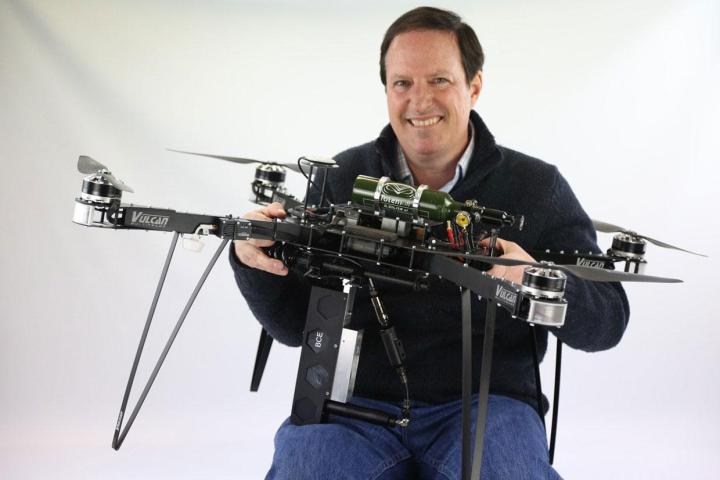
Environmental organizations have been trying (and failing) to reverse this trend for decades, but UK-based outfit BioCarbon Engineering thinks it can succeed where others have failed. How? By enlisting an army of seed-bombing drones to autonomously replant trees faster than mere humans ever could.
“The only way we’re going to take on these age-old problems is with techniques that weren’t available to us before,” says CEO Lauren Fletcher. “By using this approach we can meet the scale of the problem out there.”
Fletcher envisions BioCarbon drones flying out above a logged area, using cameras to map out the level of deforestation. If a remote operator determines that the location is a good candidate for restoration, the drones would swoop down to just a few meters above the ground and fire a volley of seed pods into the Earth. These pods would be pre-germinated and covered in a nutrient-laden hydrogel, giving them a greater chance of successful growth.
This wildly ambitious plan isn’t without its fair share of flaws, but Fletcher remains optimistic. He estimates that a properly-equipped drone could plant at a rate of 10 seed pods per minute. With two operators manning multiple drones, he reckons it would be possible to plant up 36,000 trees in a day — for a fraction of what it costs to plant trees by hand. In all, UAV-seeding could be about 15 percent of the cost of traditional methods, he says.
BioCarbon has yet to implement its plan on a large scale, but it’s moving quickly to make it happen. The company’s prototype seed-bombing drone was recently featured in the UAE’s Drones for Good competition, and last year won BioCarbon a $1.25M award from the Skoll Foundation. If all goes as planned, the company expects to have a production-ready version of the drone by the end of this summer.



